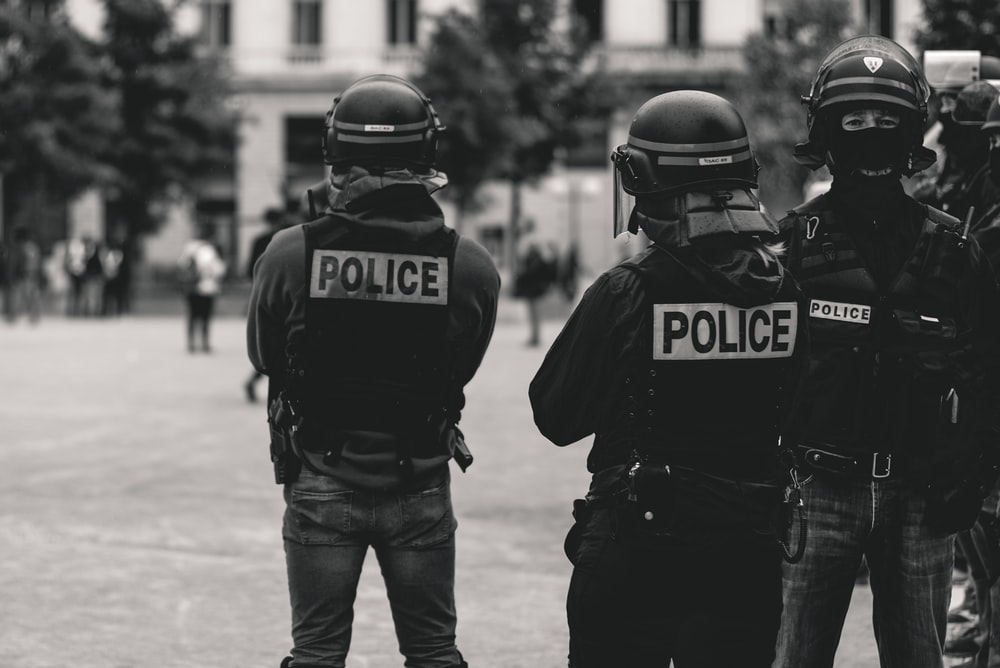
- admin
- June 19, 2020
- 2:14 pm
- No Comments
What’s The Future of Law Enforcement Communications?
Over the years, technological advancements have opened new doors and outlined a wide range of opportunities for us in every industry. It’s brought ease of living and better communication to all facets of our life—seeping into even the most mundane tasks that we perform daily.
But perhaps the most epic transformation brought by technological advancements was the realm of telecommunication. Who would’ve thought ten years ago that a small device could help you track your food?
By replacing analog means of communication with social networks and various other applications, technology has streamlined communication to a much greater extent than any of us could have fathomed.
But the technological evolution doesn’t stop here. Industries must learn to evolve with the rapid changes that technology brings into our lives —and so do law enforcement agencies.
Let’s take a look at how technology has affected law enforcement communication, and what the future of telecommunication looks like for these agencies.
Law Enforcement Communication: Why Is It Important?
Effective communication is one of the most critical components of any law enforcement operation. A lot goes into streamlining communication between law enforcement agents—from learning the use of radio to specific hand gestures for communication during times of distress.
 In addition to that, having interpersonal skills to communicate with peers, subordinates, and court representatives is a fundamental aspect of being a reliable law enforcement agent. They must have an excellent command of their language to de-escalate situations, help individuals, and improve relationships within their community.
In addition to that, having interpersonal skills to communicate with peers, subordinates, and court representatives is a fundamental aspect of being a reliable law enforcement agent. They must have an excellent command of their language to de-escalate situations, help individuals, and improve relationships within their community.
How Has Technology Helped Law Enforcement Communication?
Law enforcement agents have been at the forefront of welcoming innovation in communication to keep up with new threats and crimes that emerged due to advancements in technology. From custom-molded earpieces to digital radios, adopting the latest tech in communication has always been a primary goal for law enforcement agencies.
Here’s a quick look at some of the most important innovations in communication that have helped law enforcement officers do their job.
Geofencing Radio Channels
Geofencing radio channels have allowed police officers to improve their situational awareness. They can be used to monitor mobile units and send alerts to command units. They prevent officers from unknowingly driving into dangerous zones without backup or unintentionally alerting the suspect to the presence of the police.
Three-Dimensional GPS
GPS technology has evolved considerably over the past few years. The location and movement of tactical officers in real-time allows offers to coordinate their movements better. This comes in handy in locations with several high-rise structures and buildings.
 Holster Sensors
Holster Sensors
Radioing for backup immediately over something minutely suspicious wasn’t sustainable—especially if law enforcement officers are on an undercover operation. Holster sensors have been helpful in countering any actions that may jeopardize the safety of fellow officers.
These use a data network that reports to the command center if an officer has drawn or re-holstered their weapon. If a weapon is drawn, an automatic alert is sent for backup.
What Does The Future For Law Enforcement Communication Look Like?
Following the current trajectory that it’s taken, here are a few things one can expect for the future of law enforcement communication.
Applications for Effective Communication and Timely Alerts
It wouldn’t be naïve to assume that law enforcement agencies will soon be able to receive communication innovations that offer them more tactical and situational information regarding incidents. Be it active incidents or verbal transmission; these smart applications can be used to send automatic and timely alerts.
Some other advantages that these applications could offer include automatically triggering camera devices to send alerts to nearby officers when a crime is being committed and enabling microphones to record events.
PTT and IoT Growth
With a substantial market jump in the production of PTT products for smart devices, one can reasonably assume that they will play a substantial role in the future of law enforcement communication. With more production and even more devices being deployed, there will be a need for end-user customization for law enforcement agents.
Additionally, even though wireless devices are much more reliable for officers, most law enforcement organizations struggle to make them work with smartphones and tablets since they aren’t designed for PTT. However, with the introduction of more PTT devices, reliability on wireless devices will increase—which will, in turn, bolster communication between law enforcement agents.
More Smart Tech
Smart technologies like virtual reality (VR), augmented reality (AR), artificial intelligence (AI) are going to be incorporated to provide communication solutions for law enforcement agencies —simply because the world is adopting them, and so should the bearers of justice, law, and order.
Since police officers undergo regular training sessions, with virtual and augmented reality, these conferences and trade shows can be streamlined. There won’t be a need to travel to the location when a 360-degree experience of any new product can be demoed to the officers while they stay home.
In addition to that, augmented reality technology can assist with police training and exercises, whereas arterial intelligence can help law enforcement agencies identify a multitude of potential threats.
Will there be bumps along the road? Yes. But those issues will also be resolved eventually.
Meanwhile, if the future of law enforcement telecommunication has piqued your interest in becoming a law enforcement agent, get started with us today!
Interested In Becoming A Law Enforcement Agent?
One of the most coveted and respected jobs in the country, becoming a police officer is a major decision. You can become one by appearing for a Suffolk County police exam.
The test is lengthy, divided into several segments, and both written as well as physical. You can start prepping for it by registering for classes, tutorials, and resources offered by Civil Service Success.
We offer various prep classes for civil services, including police test, NYC civil service exam, NYC firefighter exam, and NYS court officer trainee exam.
Get in touch with us to find out more today!

